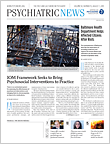Charles Morin, Ph.D., a clinical psychologist at Quebec’s University of Laval, thinks the time has come for people to pay more attention to the role of sleep in good and poor health. “One-third of our life is spent sleeping,” he said. “Yet we don’t seem to place it in the same public health perspective as activities like eating or exercise.”
Part of the problem may lie in the fact that there are few high-level guidelines related to sleep or sleep research that might help raise public awareness and stimulate education efforts.
To address this shortcoming, the American Thoracic Society (ATS) has now put forth an official policy statement titled “The Importance of Healthy Sleep: Recommendations and Future Priorities.”
These guidelines review the current state of knowledge regarding how long both children and adults should sleep, the impact of drowsiness on driving and working, and the causes, effects, and treatment options for sleep apnea and insomnia.
While the source may be pulmonary physicians, Sanjay Patel, M.D., one of the members of the ATS committee that prepared this statement, noted that the message applies to everyone.
“Pulmonologists only see a minority of patients with sleep problems,” said Patel, who is also an associate professor of medicine at Brigham and Women’s Hospital. “The effects of poor sleep are so broad, affecting all aspects of physical and mental health.”
Morin knows much about the latter aspect, as he was part of the DSM-5 work group on sleep-wake disorders. “Psychiatrists have made strides in appreciating sleep disorders more,” he told Psychiatric News, highlighting that DSM-5 removed the distinction of primary or secondary insomnia.
“Now, clinicians no longer will have a mindset that insomnia may be only a byproduct of another problem like anxiety. This is a paradigm shift,” he said. “With the DSM-5 changes, we are saying if someone comes in with anxiety and insomnia, we will treat both equally.”
The treatment of insomnia is another challenge, though. The ATS guidelines noted that clear evidence supports the use of cognitive-behavioral therapy for insomnia (CBT-I) regardless of associated comorbidities, as it is effective and does not cause any adverse side effects.
A recent analysis in JAMA Internal Medicine that compiled data from 37 separate clinical studies involving patients with insomnia and a co-occurring medical condition (such as depression, chronic pain, or cancer) supports this assertion.
That study found that twice the percentage of patients who received CBT-I achieved remission from insomnia compared with those in control or comparison groups; CBT-I also improved most sleep parameters with the exception of total sleep time, and the benefits were more strongly pronounced in people with psychiatric comorbidities.
“If anything, CBT-I might be more preferable if the patient is already taking medications for some other disorder,” Morin said. “I have nothing against sleep medicines, particularly if used for acute insomnia, but they target only the symptoms of the problem, while CBT-I targets the underlying causes of why you cannot sleep.”
Of course, the state of the science and the state of the clinic are often not aligned, and there is an undersupply of qualified CBT-I providers available, as well as limited insurance options for this therapy.
“The economic barrier is a major obstacle, but I think also patients have some misconceptions that CBT-I may take weeks or months, whereas you can get good results in as little as two or four sessions,” Morin said. “And in the long run, CBT-I is probably less expensive than medication.”
One solution for access might be the development of more web-based CBT-I programs to be used alone or perhaps in conjunction with an in-person visit. One of the ATS’s recommendations for future priorities is to explore ways to develop cost-effective care delivery models.
Patel believes that physician education should be a priority, however. “There still is a lack of time devoted to sleep and sleep disorders during medical school or residency,” he said. “And that may lessen the value that physicians or other health care providers give to sleep when counseling patients.”
Patel noted that ATS is preparing sleep education modules that will be made available to pulmonary trainees, and while the society has no definite plans to expand their use, they may serve as good templates for other medical organizations. ■
More information on the ATS guidelines on healthy sleep can be accessed
here. An abstract of the
JAMA Internal Medicine article “Cognitive Behavioral Therapy for Insomnia Comorbid With Psychiatric and Medical Conditions: A Meta-analysis” is available
here.
